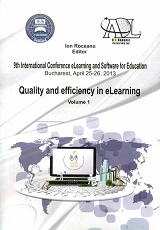THE ROLE OF INFORMATION AND COMMUNICATION TECHNOLOGY (ICT) IN FORMAL, INFORMAL, NONFORMAL LEARNING AND INCIDENTAL LEARNING
THE ROLE OF INFORMATION AND COMMUNICATION TECHNOLOGY (ICT) IN FORMAL, INFORMAL, NONFORMAL LEARNING AND INCIDENTAL LEARNING
Author(s): Mihai AndronieSubject(s): Education
Published by: Carol I National Defence University Publishing House
Keywords: formal learning; informal learning; nonformal learning; incidental learning
Summary/Abstract: The current advances in the field of Information and Communication Technology (ICT) are having a considerable impact in all forms of education (formal, informal, nonformal and incidental learning). This paper is taking in consideration an analysis of advantages and disadvantages of usage of ICT (Information and Communication Technology) on formal, informal, nonformal and incidental learning as forms of education. There are a number of significant differences between the different kinds of learning mentioned above, among them formal learning being the most standardized. However, the other types of learning have their importance because not all the persons interested to learn more in a certain area have the intention or possibility to follow formal courses. There are advantages and disadvantages that both formal and less formal learning have. For example formal learning has the advantage that it gives the students the confidence that the area of study will be better covered and usually provides certificates to attest the abilities and knowledge of the students, the disadvantages being that it is more expensive than the other learning types. However, less formal learning is more accessible, more flexible, cheaper, but a person learning in this way will not benefit from a certificate attesting his abilities and knowledge and it will usually take a longer time to learn. Learning from experience (trial and error) can sometimes be one of the best ways to learn, but it has the limitations previously mentioned and it can be sometimes the most expensive learning method. There will be a comparative analysis of differences and similarities between above mentioned concepts, advantages and disadvantages, combining opportunities for better learning.
Journal: Conference proceedings of »eLearning and Software for Education« (eLSE)
- Issue Year: 9/2013
- Issue No: 01
- Page Range: 453-458
- Page Count: 6
- Language: English

